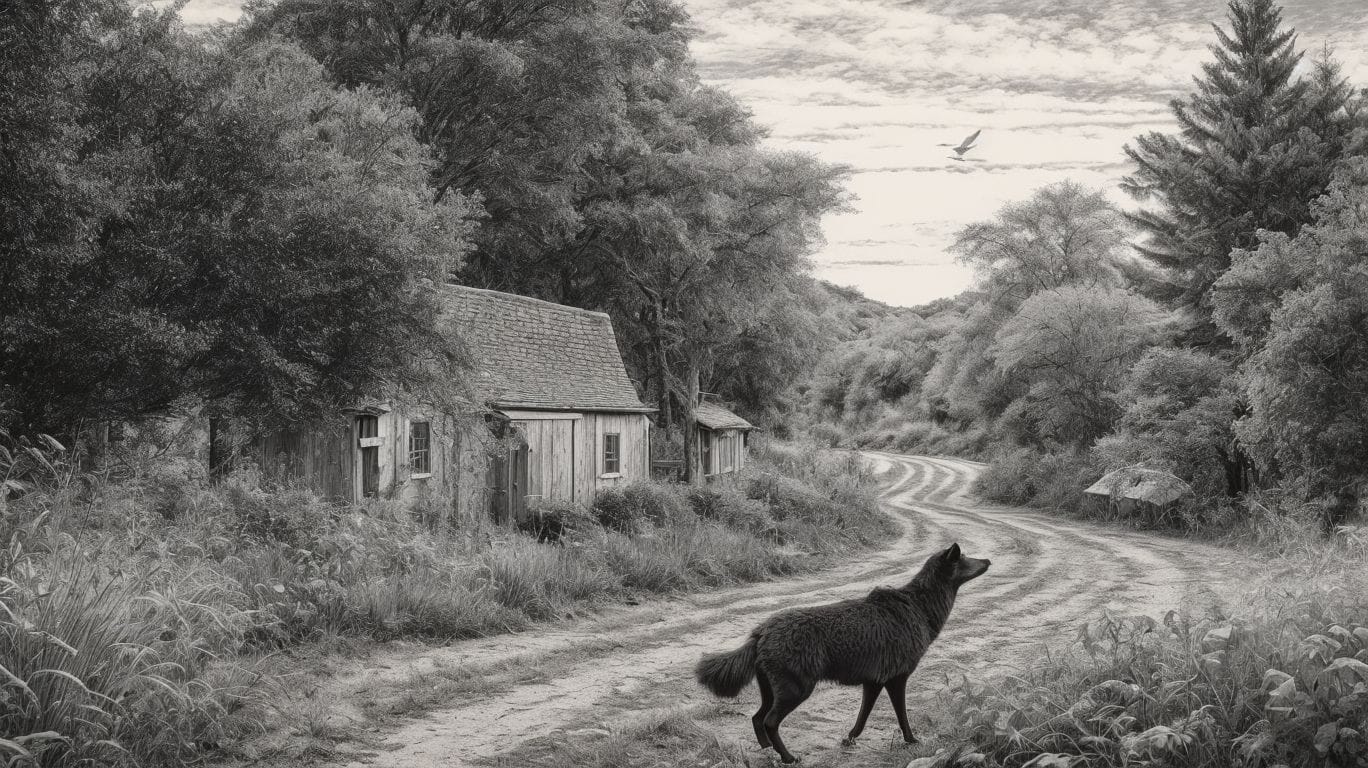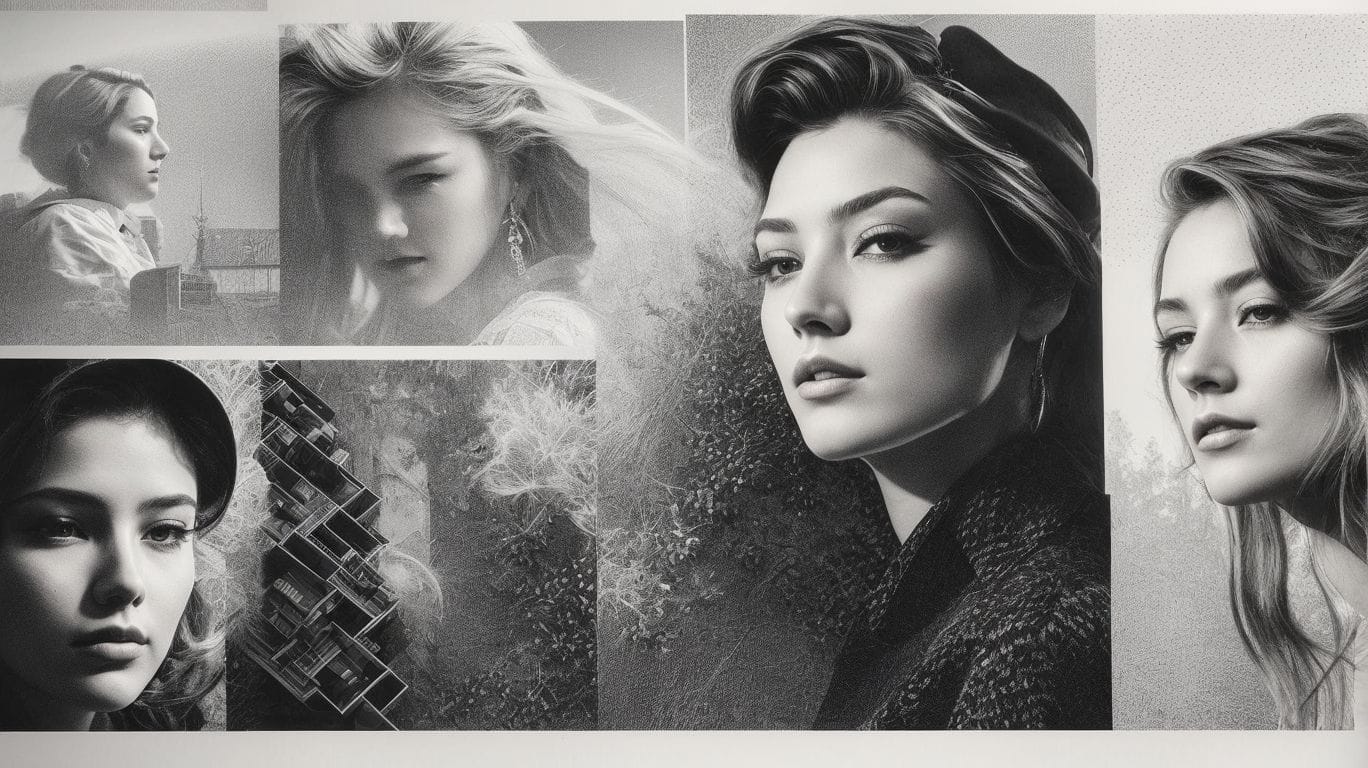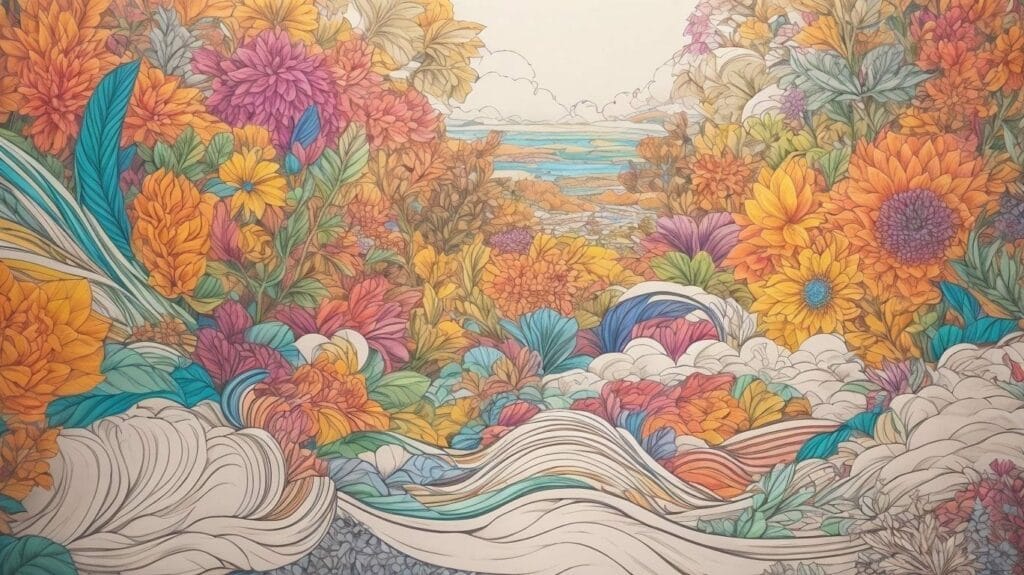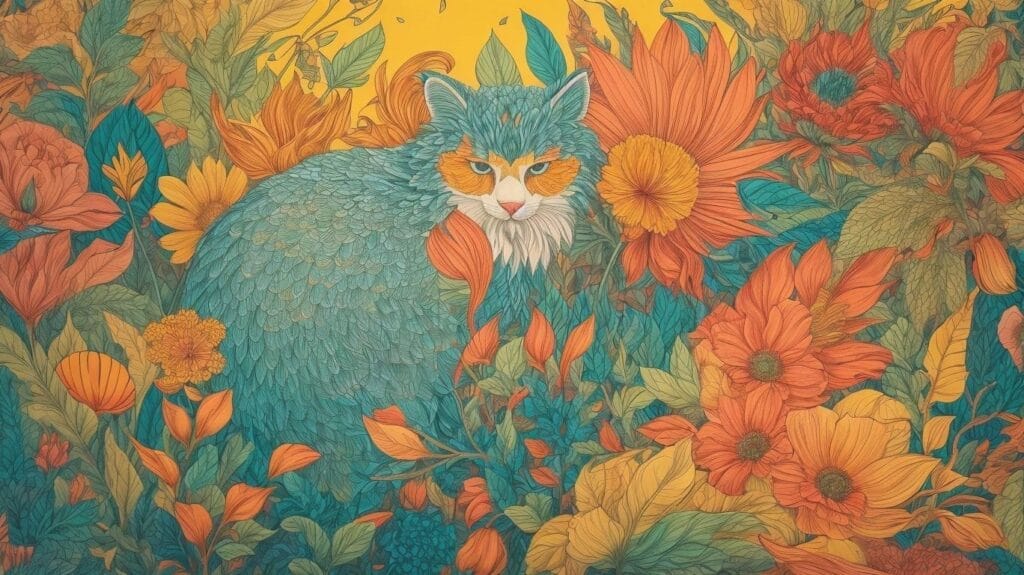In the world of art, mastering cross-hatching and stippling techniques can elevate your work to a whole new level of depth and complexity. These techniques, often used in drawing and illustration, allow artists to create rich textures, shadows, and dimensions using a series of carefully placed lines and dots.
In this comprehensive guide, we will delve into the art of cross-hatching, exploring its definition, benefits, and various methods. We will also provide practical tips, step-by-step guides, and examples to help you get started with cross-hatching, as well as an exploration of different types and variations. We will discuss the essential tools for cross-hatching and offer exercises to improve your skills.
Whether you’re a beginner looking to learn the basics or a seasoned artist seeking to enhance your mastery, this article will provide you with the knowledge and resources to hone your cross-hatching and stippling abilities. So, let’s dive in and unlock the potential of these compelling techniques.
Key Takeaways:
Mastering Cross-Hatching and Stippling Techniques
Mastering Cross-Hatching and Stippling Techniques involves understanding the intricate art of creating form, shadow, and light through the skillful use of lines and dots.These shading techniques are vital for artists to convey depth, texture, and dimension in their drawings. Cross-hatching, which involves intersecting lines, is particularly effective in suggesting form and volume. Meanwhile, stippling, achieved by carefully placing dots, adds a tactile quality to the artwork.
By mastering these techniques, aspiring artists can add richness and complexity to their illustrations, enhancing their ability to capture intricate details and create compelling visual narratives. Understanding the relationship between light and shadow in these methods is essential for creating realistic and visually engaging artwork.
Understanding Cross-Hatching

Credits: Loststorystudios.Com – Gabriel Ramirez
To comprehend Cross-Hatching, one must delve into the realm of shading techniques, exploring the nuanced use of parallel lines to create areas of light and shadow.Definition of Cross-Hatching
Cross-Hatching is a shading technique that involves the use of intersecting lines, typically in a crisscross pattern, to create areas of shadow, form, and texture in drawings.
This method is commonly utilized in artistic rendering to add depth and dimension by varying the spacing and intensity of the lines. By carefully controlling the density and direction of the intersecting lines, artists can achieve a wide range of tonal effects, from subtle gradations to bold contrasts.
Cross-hatching is particularly effective in conveying the three-dimensional quality of objects and figures, adding a sense of volume and solidity to the composition. It is a versatile technique that can be adapted to suit different drawing styles and subjects, making it a valuable tool for artists seeking to enhance the visual impact of their work.
Benefits of Cross-Hatching
The benefits of Cross-Hatching extend to its ability to convey form, shadow, and areas of light in drawings, adding depth and dimension to the artistic compositions.By intersecting sets of closely spaced parallel lines, cross-hatching generates a sense of volume and texture, defining the shapes within the drawing. This technique is particularly effective in creating visual depth, as the overlapping lines produce darker areas, enhancing the illusion of shadow and depth.
Moreover, cross-hatching contributes to the overall realism and three-dimensionality of the artwork by capturing the interplay of light and shadow. It allows artists to control the tonal values and create a more dramatic and convincing representation of forms, adding a sense of dynamism and realism to their compositions.
Getting Started with Cross-Hatching
Embarking on the journey of Cross-Hatching involves mastering the art of creating different shading styles, experimenting with cross-hatching, and exploring the interplay of light and shadow in multiple drawings.Tips for Cross-Hatching Technique
Mastering the Cross-Hatching technique involves attention to detail, consistent lines, and the skillful use of parallel strokes to create areas of shading and form in drawings.
When mastering Cross-Hatching, one should focus on maintaining line consistency to ensure that the strokes flow smoothly and uniformly. It’s important to use the same pressure and distance between the lines to achieve a cohesive look.
Additionally, stroke control plays a crucial role in Cross-Hatching. Practice controlling the pressure and angle of your strokes to create varying intensities of shading. To create shaded areas, pay attention to the direction of the strokes, ensuring they follow the form and contours of the subject.
Step by Step Guide to Cross-Hatching
A step-by-step guide to Cross-Hatching involves understanding the placement of shadows, the direction of lines, and the manipulation of light and form using pen and pencil techniques.Cross-hatching is a fundamental drawing technique used to create depth and dimension in artwork. To begin, start by identifying the light source and choosing the areas that will be shadowed.
- Next, create an initial layer of lines in one direction, ensuring they follow the contours of the form.
- Then, overlay a second set of lines in a different direction to establish the shadow areas.
Remember to vary the spacing between the lines to control the intensity of the shadows.
Examples of Cross-Hatching
Examining examples of Cross-Hatching reveals the diverse ways in which artists use shading techniques to create form, texture, and play with the interplay of light and shadow in their compositions.
Cross-hatching is a widely used drawing method where artists use intersecting sets of parallel lines to build up value, tone, and dimension within their artwork. By varying the spacing, angle, and density of these lines, artists can achieve a variety of effects.
For example, in a simple pencil drawing, cross-hatching can be used to convey the texture of different materials such as wood, fabric, or metal. In the hands of a skilled artist, cross-hatching can bring a sense of depth and three-dimensionality to a two-dimensional drawing, making it an essential skill for any aspiring illustrator or painter.
Exploring Types of Cross-Hatching

Credits: Loststorystudios.Com – Logan Mitchell
The exploration of Cross-Hatching encompasses diverse types, including contour hatching, stippling, and variations that skillfully manipulate light, shadow, and texture in drawings.Contour Hatching
Contour Hatching involves the use of lines to define and accentuate the contours of a subject, infusing drawings with depth and texture through skillful shading techniques.This intricate method employs the strategic placement of parallel or cross-hatching lines to mimic the three-dimensional form of the subject being depicted. By varying the spacing and thickness of these lines, artists can create a sense of volume and dimension, adding a captivating tactile quality to their artwork.
Applications of contour hatching extend beyond mere contour delineation; it is also instrumental in conveying the texture of various surfaces, be it the soft fur of an animal or the roughness of a stone. By adeptly manipulating the density and direction of the lines, artists can achieve a remarkable variety of textures, from smooth to coarse, thereby breathing life into their creations.
Mastering the art of contour hatching is pivotal for achieving nuanced shading. The technique allows artists to seamlessly blend light and shadow, imbuing their drawings with a sense of realism and depth. It serves as a foundational skill for artists of all levels, facilitating the comprehension and execution of more complex shading methods, such as cross-contour hatching and stippling.
Linear Hatching
Linear Hatching employs straight, parallel lines to create consistent shading and a sense of light and shadow in multiple drawings, allowing artists to master the technique of shading simple shapes and forms.
Through the meticulous use of parallel lines, artists can achieve varying tones and textures, lending depth and dimension to their artwork. This technique is versatile and can be applied to a wide range of subjects, from still life compositions to portrait drawings. By adjusting the spacing and angle of the lines, artists can control the intensity and direction of light within their drawings, creating a dynamic interplay of highlights and shadows.
Cross-Hatching Variations
Cross-Hatching offers a range of variations and styles, presenting artists with different ways to manipulate shading, form, and texture in their creative compositions.
From the straightforward use of parallel lines to the intricate layering of lines at various angles, artists can achieve diverse effects with cross-hatching. By adjusting line spacing and density, they can convey depth and dimension. Furthermore, cross-hatching lends itself to representing different textures, be it smooth surfaces or coarse materials. Artists can experiment with the interplay of light and shadow, creating dynamic visual interest in their works.
Tools for Cross-Hatching
The tools for Cross-Hatching encompass a variety of mediums, including pen ink, pencils, and other shading implements that artists use to create smooth, consistent lines and shading effects.Exercises to Improve Cross-Hatching Skills
Engaging in exercises to improve Cross-Hatching skills involves experimenting with different values, understanding the cross-hatching technique, and mastering the manipulation of light and shadow in drawn compositions.Practice Drills for Cross-Hatching
Practice drills for Cross-Hatching involve creating hyperrealistic drawings through the meticulous application of seven different shading techniques, honing the artist’s ability to manipulate light and shadow effectively.
One of the most basic yet crucial shading techniques in cross-hatching is the parallel hatching, where lines are drawn parallel to one another to establish the base shade. Another essential method includes contour hatching, which emphasizes the form and shape of the subject.
By mastering these techniques, artists can develop a keen sense of varying pressure and line weight to evoke depth and dimension in their drawings.
Techniques to Enhance Cross-Hatching
Techniques to enhance Cross-Hatching revolve around refining shading focuses, infusing drawings with a sense of texture, and studying examples of intricate artwork created by iconic artists such as Rembrandt.Cross-hatching can be elevated by employing varying the spacing between the parallel lines, controlling their thickness, and altering the angles at which they intersect. These nuances contribute to the creation of depth and dimension within the artwork.
Observing the works of masters like Albrecht Dürer and Gustave Doré can provide valuable insights into achieving a balance of light and shadow through cross-hatching. This deliberate approach to shading can transform a piece, adding complexity and visual interest.
Tips for Practicing and Mastering Cross-Hatching
Tips for practicing and mastering Cross-Hatching encompass the exploration of different types of shading, the implementation of cross-hatching drawing techniques, and the manipulation of different values, highlights, and line density in artistic compositions.Conclusion and Further Resources

Credits: Loststorystudios.Com – Adam Scott
Mastering Cross-Hatching and Stippling Techniques enables artists to manipulate different values, create lightest areas, experiment with cross-hatching drawing, and vary line density to achieve stunning visual effects in their drawings.By mastering these techniques, artists gain control over the distribution of light and shadow in their artwork.
The precision of the cross-hatching method allows for the creation of subtle transitions between shades, enhancing the depth and dimension of the drawing. The careful manipulation of line density variations further refines the details and textures in the illustration, resulting in a more realistic and visually captivating piece.
These techniques not only add depth and dimension to the artwork, but they also provide a unique style and depth to the overall composition.




